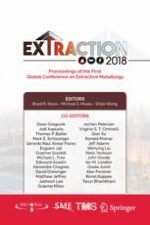2018 | OriginalPaper | Buchkapitel
Advances in the Development of Electrostatic Solvent Extraction for Process Metallurgy
verfasst von : Don Ibana, Simon Assmann, Marc Steffens
Erschienen in: Extraction 2018
Aktivieren Sie unsere intelligente Suche, um passende Fachinhalte oder Patente zu finden.
Wählen Sie Textabschnitte aus um mit Künstlicher Intelligenz passenden Patente zu finden. powered by
Markieren Sie Textabschnitte, um KI-gestützt weitere passende Inhalte zu finden. powered by
